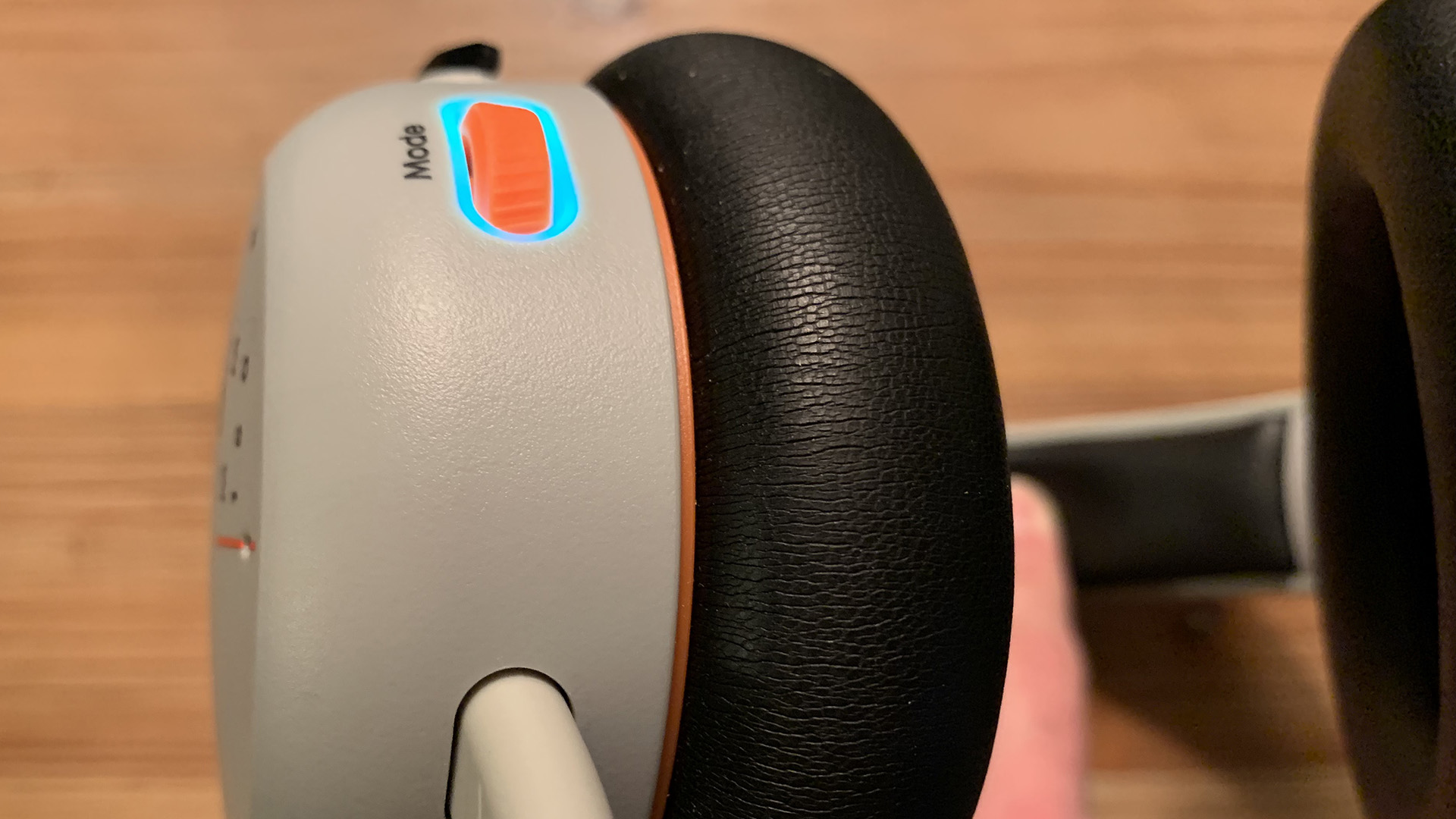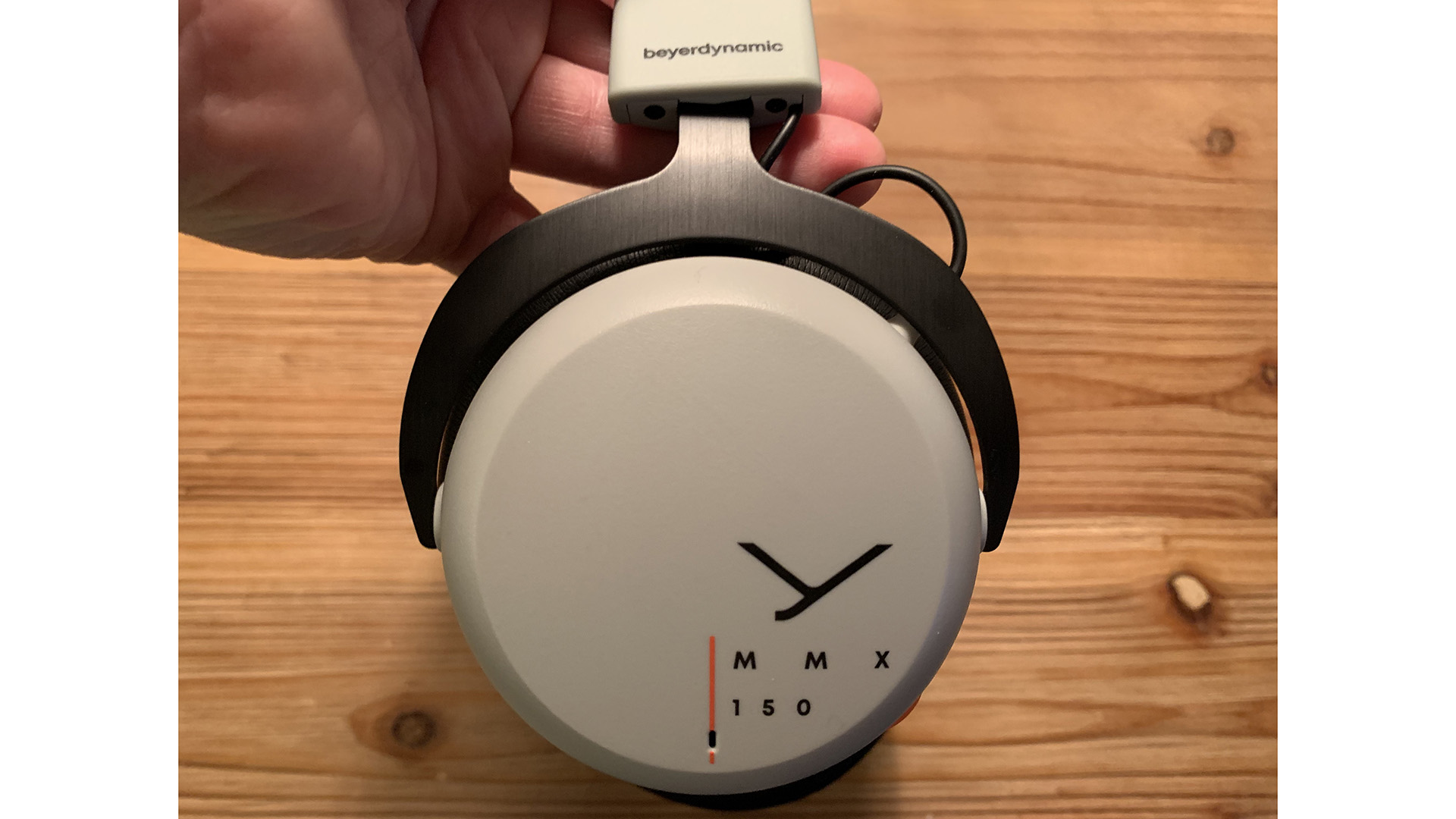Beyerdynamic MMX150 review: an affordable audiophile gaming headset
The Beyerdynamic MMX150 gaming headset proves that you don’t have to break the bank for excellent gaming audio


The Beyerdynamic MMX150 is a welcome addition to the expanding landscape of gaming headsets and audio. It provides great sound at a reasonable price and with the kind of durability that will survive any and all rage quits. It does come with an unusually sensitive cable. However, outside of that one issue, this headset offers a ton of value.
-
+
Great sound quality
-
+
Durable and unique build
-
+
Well-implemented transparency mode
-
-
Cable is sensitive to touch
-
-
Not the widest soundstage
Why you can trust T3

The Beyerdynamic MMX150 is one of two new gaming headsets the company has just released, along with the analog-only MMX100. Though Beyerdynamic is not brand new to the gaming headset market, like Audeze, it’s known much more for its studio and audiophile products.
This is good news for anyone who wants a quality pair of cans to game in and doesn’t care about RGB lighting or other ancillary features. If the only question that comes to mind when looking at a headset is whether it sounds good, then the MMX150 is the kind of headset you’re looking for.
With that said, the best gaming headsets are about more than just the sound. And, though you don’t get things like RGB lighting here, this headset does come with some important features and qualities. So, when considering the whole package, is this the right headset for you? Read on to find out.

Beyerdynamic MMX150 review: price and release date
Gaming headsets vary quite a lot in price from entry-level models to premium audio options. At $149/£109/AU$199, the Beyerdynamic MMX150 headset sits somewhere in the middle.
Though that’s an affordable price for what you get, more budget-conscious shoppers will appreciate the cheaper price of entry for the MMX100 ($99/£89/AU$149), which covers a lot of the same ground but skips the digital audio capability.
Both the MMX150 and the MMX100 launched on November 16th, 2021.

Beyerdynamic MMX150 review: design and features
At first glance, the Beyerdynamic MMX150 looks a bit like those headsets you would wear while piloting a small plane. It’s unique looking, whether you get it in black or grey, with a very rounded ear cup design and a fairly wide headband, both of which are made of a thick, durable plastic. It doesn’t look much like a gaming headset outside of the detachable mic sticking out of the left ear cup, and a volume wheel that lights up situated on the back end of the same ear cup. Depending on your preference, that could be a good thing.
Get all the latest news, reviews, deals and buying guides on gorgeous tech, home and active products from the T3 experts
Whatever your aesthetic preferences, it’s clearly a well-made headset. It would take intentional effort to do damage to a pair. In fact, stretching the headband quickly shows you how tough the MMX150 is. It has enough give to let you loosen up the fit but it stiffens up fairly quickly. An accident, like sitting on it, won’t break it.
As far as adjustability goes, the MMX150 gives you a decent amount. The headband extends more than enough for just about any head size and has enough tilt to boot. There’s not a lot of swivel with the ear cups but there’s enough for most people.
It’s also a fairly comfortable pair of cans. And, comfort is an aspect that is key when it comes to gaming headsets. After all, most gamers plan on playing for hours at a time, so something that hurts after a while due too much clamping force or some design issue is a hard sell.
The earpads are nice and thick, filled with memory foam and covered in a soft artificial leather encasing. The drivers themselves have a layer of memory foam as well just in case your ears get a little close, and the inner part of the headband gets the same treatment. Your head will stay pretty comfy even after hours of use.
However, it does have a little bit of clamping force (far from the worst I’ve experienced though) so you will want to stretch them out. And, unlike some other newer headsets out there, there’s been no extra accommodations for those that wear glasses. While they weren’t terrible when wearing glasses, it does compromise the comfort just a little bit.
There is one major flaw in its design. The cable used to connect to your source, regardless of whether you use the one that terminates in a USB connector or a 3.5mm jack, picks up any movement or touch. You have to turn the volume quite a bit to not hear the cable movement. Of course, once you’re settled on your couch or chair, you probably won’t be experiencing this too much but if you tend to move a lot when gaming (maybe you have a victory dance), you’ll notice this quite quickly. Luckily, the design flaws of the Beyerdynamic MMX150 stop right there.

Beyerdynamic MMX150 review: features
The Beyerdynamic MMX150 isn’t quite as feature-filled as a lot of gaming headsets. You won’t find RGB lighting here and there’s no software to turn on some proprietary 3D surround sound option or play around with EQ. But, it comes with one particular feature that’s not typical among gaming headsets. In fact, it’s something more likely to show up in a pair of prosumer headphones from Bose or Beats and that’s the MMX150’s “Augmented” mode.
The augmented mode is a different name for transparency mode, which, if you have a pair of Apple, Beats, or Bose earbuds, you’ve probably already used. In essence, transparency mode uses little mics in the headphone to bring in sound from the outside world so that you can hear if someone or something is trying to get your attention, like an announcement at the airport. And, though it’s more useful in something that you would more likely use in public like a pair of AirPods, it’s actually well-implemented here. When on, I could clearly hear the audio coming from my laptop, whether it was a video game, music, or a video, and clearly hear my TV at the same time.
When the transparency mode is off, which just takes holding down the volume wheel on the headset for two seconds, you get decent but passive noise cancellation. Since it’s not active, it won’t block out all sound but it’s good enough for most purposes.

A red LED displays on the microphone when muted
The mic is the other major feature to discuss here. It’s also controlled by pressing on the volume wheel. A quick tap will turn it on and off, with a red LED on the end of the mic to indicate that it’s muted. The “Meta Voice” mic, which uses a 9.9mm capsule to pick up sound, does a pretty good job of clearly reproducing the user’s voice. I found no distortion or strange EQ’ing of my voice when using it. It doesn’t have any active background noise rejection that I’ve seen implemented on other gaming headset mics but it doesn’t pick up too much background noise when using it.
I’ve tested the mic while having the TV turned on and not that far away and it only faintly registered. However, if you’re gaming in a noisy environment, you may want to go for something that does implement active background noise rejection or get a dedicated USB mic with extra features.
Unfortunately, since there’s no software from Beyerdynamic, there is no extra fine tuning that you can squeeze out of the headset right out of the box.

Beyerdynamic MMX150 review: performance
The Beyerdynamic MMX150 sounds really good, especially considering its price tag. And, unlike a lot of gaming headsets, music actually sounds pretty good on these.
There’s enough bass here to keep things sounding full, though it’s far from a bass-heavy pair of cans. You won’t be feeling the rumble with these but you won’t feel like you’re missing any of the low end either. The mid-range is likewise present without being overpowering, making audio sound rich but not muddy. And, the high-end is clear, giving you the kind of detail you need to make everything out in any media you’re listening to, without being harsh.
In fact, these are fairly neutral sounding headphones, at least compared to most gaming headsets I’ve heard, where either the bass or high end tends to be overemphasized. Depending on what you’re looking for in a headset, you might find that boring. These are not for bassheads, in particular. But I found the audio quality to be balanced and engrossing, whether I’m playing a video game, bingeing Netflix or listening to music.
The soundstage on the MMX150 is not particularly wide. You do get a good stereo image and you can easily make out objects going left to right and so on. When playing Days Gone, for example, I could easily hear when freakers were trying to catch up on me. And, when playing Hellblade: Senua’s Sacrifice, I was engulfed by the voices ping-ponging from side to side. However, the soundstage is on the intimate side, which actually worked well with Hellblade. That’s not a bad thing, it’s just not as expansive as I expected.
On that note, the sound imaging was very accurate. So, while the soundstage wasn’t especially wide, I could make out where every object was supposed to be on that soundstage, whether it was a character in a video game (like those freakers in Days Gone) or instruments in a busy arrangement, such as the dueling violins in Aoife O’Donovan’s Bull Frogs Croon i: Night Fishing.
When using the analog connection, sound quality does suffer slightly, as does sound separation. Audio is a little hazier sounding, meaning you’re not getting as much detail in the high end and it’s harder to pinpoint where on the soundstage a piece of audio is. It’s not a massive distinction but it’s noticeable.

Beyerdynamic MMX150 review: verdict
The Beyerdynamic MMX150 is a heck of a lot of headset for $149/£109/AU$199. It might not come with the kind of feature-set that a Razer headset has but it does everything it sets out to do very well. It delivers very capable sound that lends itself well to multiple forms of listening, not just gaming.
It has a quality mic that will satisfy most users. And, it comes with a great, well-implemented, and somewhat unique feature among gaming headsets in the Augmented mode. It’s also very durable and stands out visually from a sea of cookie-cutter gaming audio peripherals.
It does come with one annoying flaw with a cable that amplifies any touch or movement into the headset. But, outside of that, every other issue or drawback is a matter of preference. If you have $150 to put towards a headset, you’ll be happy with these.
Beyerdynamic MMX150 review: also consider
If you have a bigger budget, you can spring for the Audeze Penrose, which at $299/£299/AU$399 could get you two MMX150’s. However, the Penrose adds in 2.4GHz wireless and Bluetooth connectivities as well as a little more software functionality. Also being an audio company first and gaming peripheral maker second, like Beyerdynamic, the audio quality is about as good as you’ll find in a gaming headset.
If you’re looking to save money though, you get most of the MMX150’s functionality in the Beyerdynamic MMX100. It’s essentially the same headset but with analog-only connectivity (this also means that you won’t find the Augmented mode on it).
James is an avid follower of the latest trends happening around tech, particularly when it comes to headphones or anything music-related, gaming, and exercise gadgets. He’s also active in the music industry and has been for the last 10 years. When not writing for T3, he likes to travel, try new foods, and find quirky attractions nearby.
